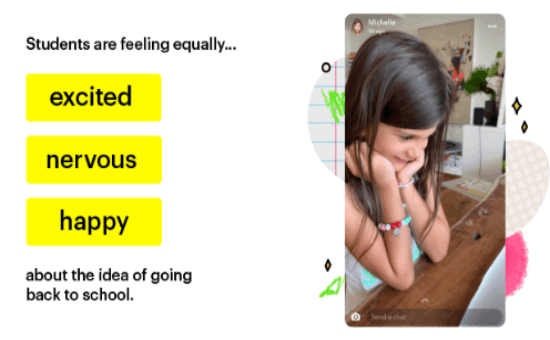Indicators
Top Spending Event by American Consumers in 2019-2023 | NRF
Holidays are always special! I mean, these are the special days we make memories with the people we love. Well, making memories and spending money. In this post, we will take a closer look at the holiday spending statistics in 2018, 2019, and 2022! The fourth quarter of the year is full of many holiday …
News
Snapchat Shares New Insights into Shopping Trends Around the Return to School
As the COVID-19 vaccine roll-out continues, and we look forward to a post-pandemic environment, students are increasingly excited about getting back to school and spending time among friends as part of the education process. Because apparently, no one enjoyed online school. Missing out on social interaction has had a huge impact on everyone, however, it …
Guides
Data & Insights: Your Back to School Strategy Guide | Quantcast
Most parents get their kids’ school supplies list one month before school starts. Buyers start their research and purchase in July. The majority of back to school shoppers make researches on mobile and buy in-store. So, retailers need to step up their game to compete in the new back-to-school shopping landscape. Read the major tips …
Researches
The Ultimate 2018 Back-to-School Trends and Insights Guide | RetailMeNot
The back-to-school shopping season is the second biggest shopping event of the year next to the holidays. That’s why consumers are bound to spend more and retailers are bound to gain more. In 2018, RetailMeNot, Inc. surveyed more than 1200 retailers and consumers in a way to gain insights into the back-to-school shopping season in …
Researches
2018 Back-to-School Survey: US Consumers | Deloitte
In 2017, the number of households with school going (K-12 grades) children in the US reached 29 million with 54 million children. This great segment grabs the retailers’ attention, especially during the back-to-school season. In 2018, the total back-to-school spending is expected to reach ~$27.6B, or $510 per household. Read the below points and cast …
Researches
Back-to-School 2018: 1,001 Moms Talk BTS Shopping | Field Agent
Back-to-school shopping (BTS/B2S) adds up. The season is in full swing but retailers still have concerns about sales they expect. In 2017, the National Retail Federation (NRF) estimated the total K-12 back-to-school spending at $30 billion and it’s expected to reach $55 billion this year. Cut through the noise and be in the know of …
Indicators
57.1% of Back-to-School Shoppers Prefer “Department Store” for School Shopping, 2017 | NRF
More than the half of B2S Shoppers (57.1%) plan to shop mostly at department stores, followed by discount stores (54.1%), clothing stores (46%) and online (45.5%). Electronic stores (24.6%), resale shops (9.1%) and drug stores (11.1%) appeared in the B2S shoppers shopping plan but with fewer ratios.
Indicators
“Percent Off” Is the Best Promotion Type Among Back-to-School Shoppers in USA, 2017 | RetailMeNot
63% of back-to-school shoppers in the USA claimed that they will spend more than $100 per person on the school supplies, while 33% will spend over $250. As a result, 81% of retailers planned to offer more deals on back-to-school in 2017 than 2016. So, it’s very critical and important to know that “percent off” is the …







